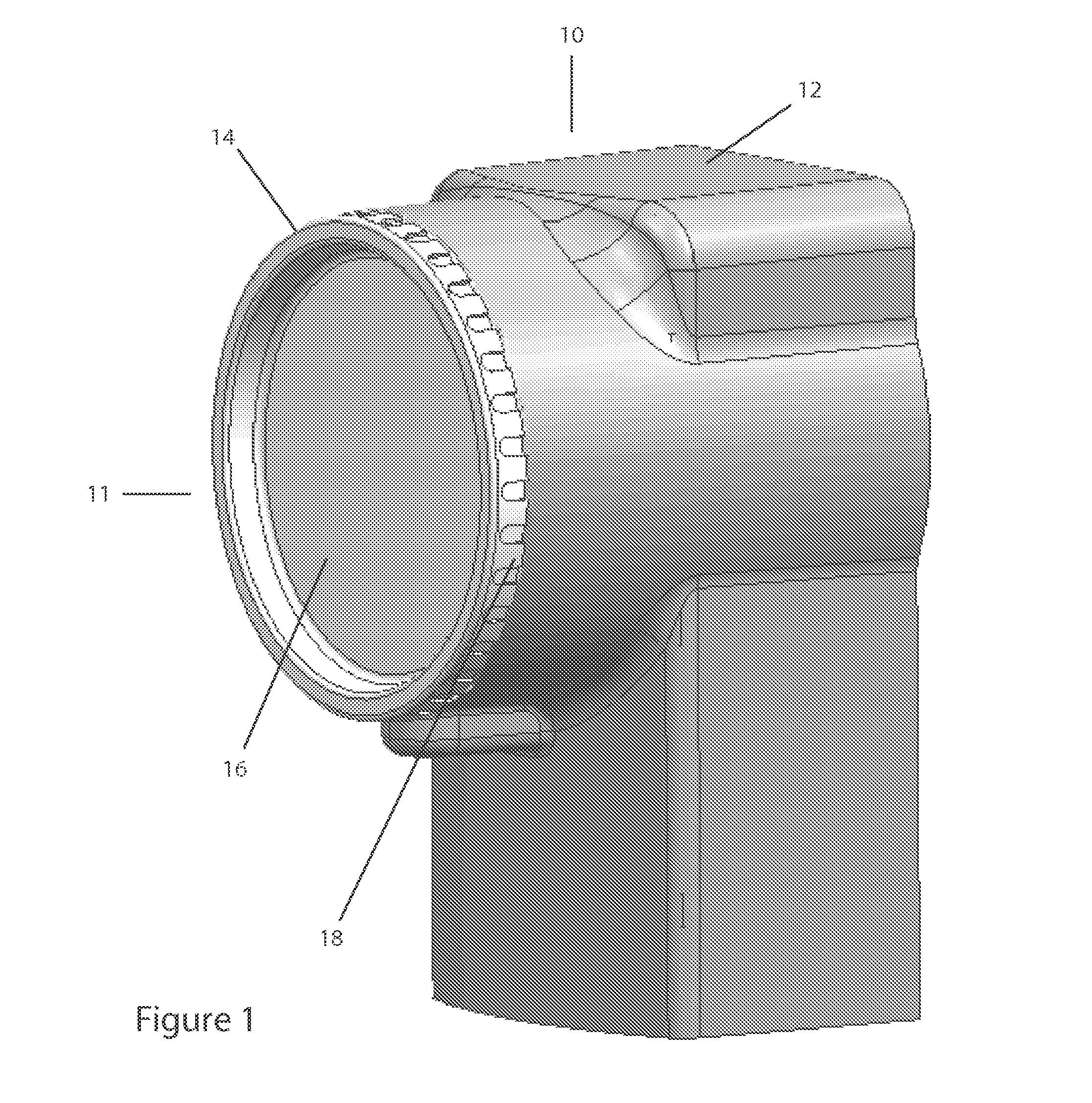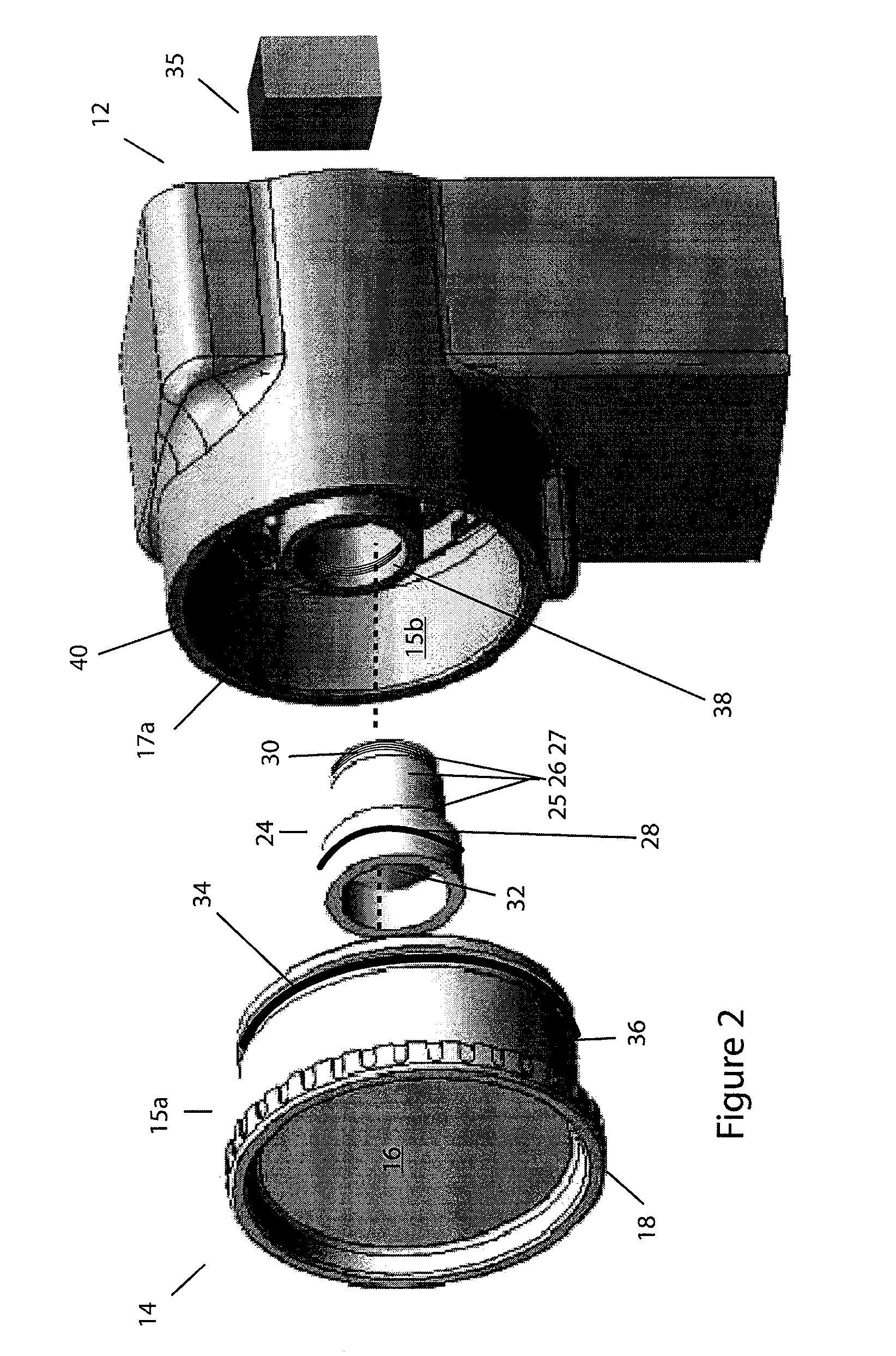Manually adjustable ruggedized focus mechanism
a focus mechanism and adjustable technology, applied in the field of image acquisition, can solve the problems of prone to failure, high cost, and high risk of exposing the lens to potentially harmful factors, and achieve the effects of avoiding re-positioning, avoiding repositioning, and avoiding repositioning
- Summary
- Abstract
- Description
- Claims
- Application Information
AI Technical Summary
Benefits of technology
Problems solved by technology
Method used
Image
Examples
Embodiment Construction
[0027]FIG. 1 depicts an image acquisition device 10 according to one practice of the invention. The device 10 includes a enclosure 12 having an optics assembly 11 rotatably disposed therein. The enclosure 12 houses components of the image acquisition device (e.g., a lens 32, an image capture medium, etc., as discussed below), protecting them from dust, dirt, water, moisture, and / or other elements of the surrounding environment (or more broadly, preventing an exchange or transfer of unwanted elements between the enclosure 12 and the environment). In the illustrated embodiment, enclosure 12, which may be “ruggedized,” comprises ceramic, metal, plastic and / or other materials suitable for providing such protection under the device's 10 expected operating conditions.
[0028]FIG. 2 is an exploded view of the enclosure 12 and the optics assembly 11. The illustrated optics assembly 11 comprises a lens sub-assembly 24 that is coupled to a window sub-assembly 14 as discussed below. The window s...
PUM
 Login to View More
Login to View More Abstract
Description
Claims
Application Information
 Login to View More
Login to View More - R&D
- Intellectual Property
- Life Sciences
- Materials
- Tech Scout
- Unparalleled Data Quality
- Higher Quality Content
- 60% Fewer Hallucinations
Browse by: Latest US Patents, China's latest patents, Technical Efficacy Thesaurus, Application Domain, Technology Topic, Popular Technical Reports.
© 2025 PatSnap. All rights reserved.Legal|Privacy policy|Modern Slavery Act Transparency Statement|Sitemap|About US| Contact US: help@patsnap.com



